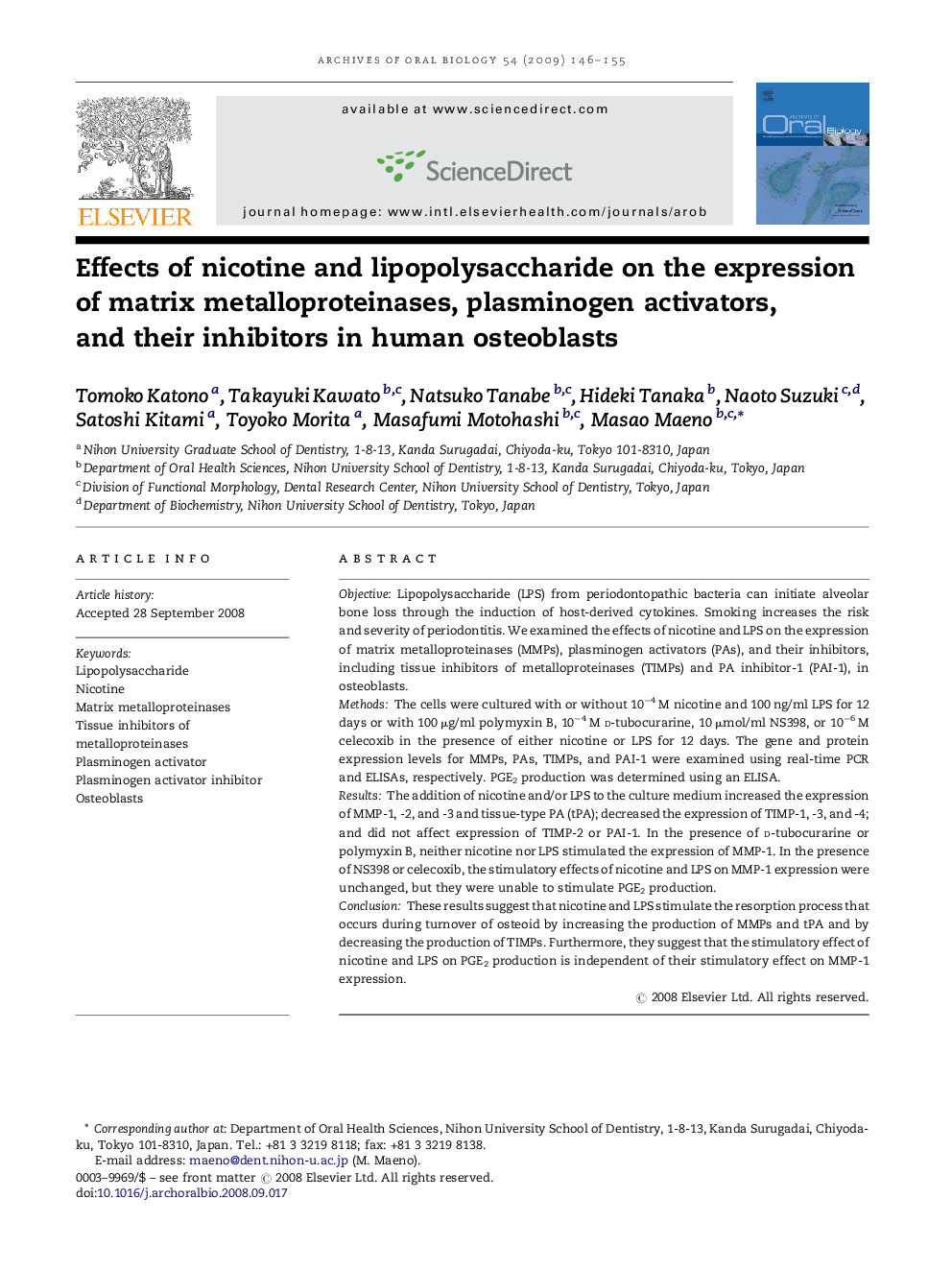| Article ID | Journal | Published Year | Pages | File Type |
|---|---|---|---|---|
| 3121709 | Archives of Oral Biology | 2009 | 10 Pages |
ObjectiveLipopolysaccharide (LPS) from periodontopathic bacteria can initiate alveolar bone loss through the induction of host-derived cytokines. Smoking increases the risk and severity of periodontitis. We examined the effects of nicotine and LPS on the expression of matrix metalloproteinases (MMPs), plasminogen activators (PAs), and their inhibitors, including tissue inhibitors of metalloproteinases (TIMPs) and PA inhibitor-1 (PAI-1), in osteoblasts.MethodsThe cells were cultured with or without 10−4 M nicotine and 100 ng/ml LPS for 12 days or with 100 μg/ml polymyxin B, 10−4 M d-tubocurarine, 10 μmol/ml NS398, or 10−6 M celecoxib in the presence of either nicotine or LPS for 12 days. The gene and protein expression levels for MMPs, PAs, TIMPs, and PAI-1 were examined using real-time PCR and ELISAs, respectively. PGE2 production was determined using an ELISA.ResultsThe addition of nicotine and/or LPS to the culture medium increased the expression of MMP-1, -2, and -3 and tissue-type PA (tPA); decreased the expression of TIMP-1, -3, and -4; and did not affect expression of TIMP-2 or PAI-1. In the presence of d-tubocurarine or polymyxin B, neither nicotine nor LPS stimulated the expression of MMP-1. In the presence of NS398 or celecoxib, the stimulatory effects of nicotine and LPS on MMP-1 expression were unchanged, but they were unable to stimulate PGE2 production.ConclusionThese results suggest that nicotine and LPS stimulate the resorption process that occurs during turnover of osteoid by increasing the production of MMPs and tPA and by decreasing the production of TIMPs. Furthermore, they suggest that the stimulatory effect of nicotine and LPS on PGE2 production is independent of their stimulatory effect on MMP-1 expression.
